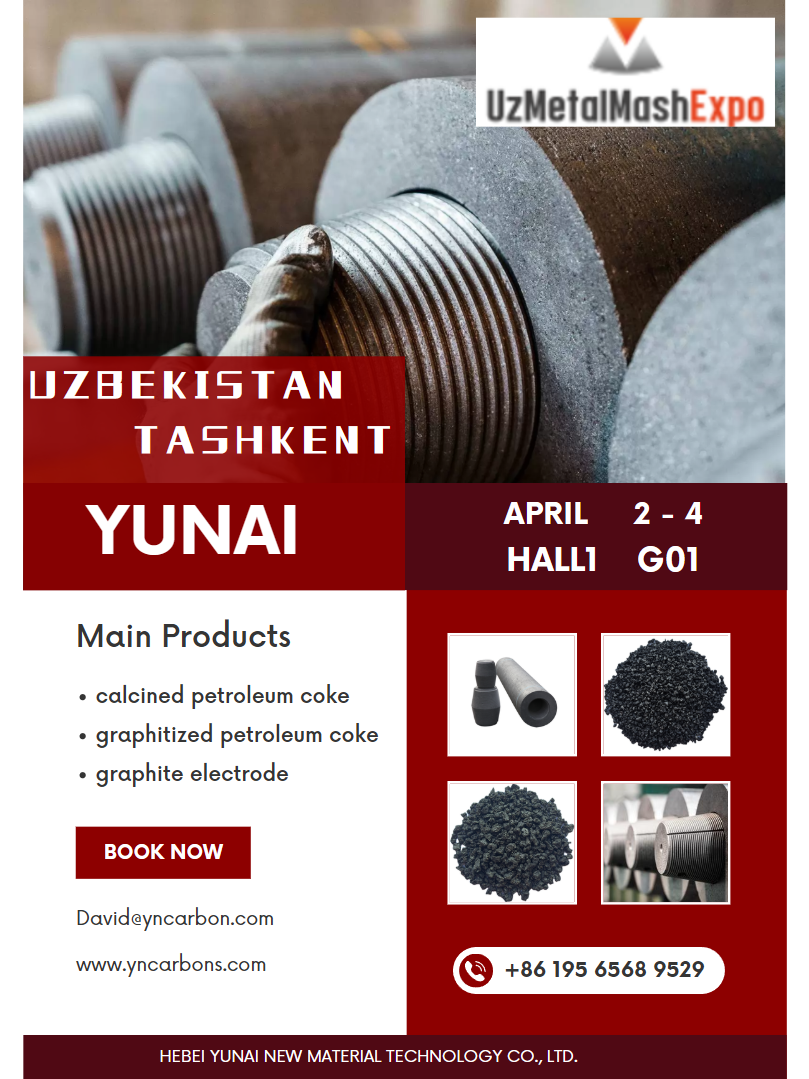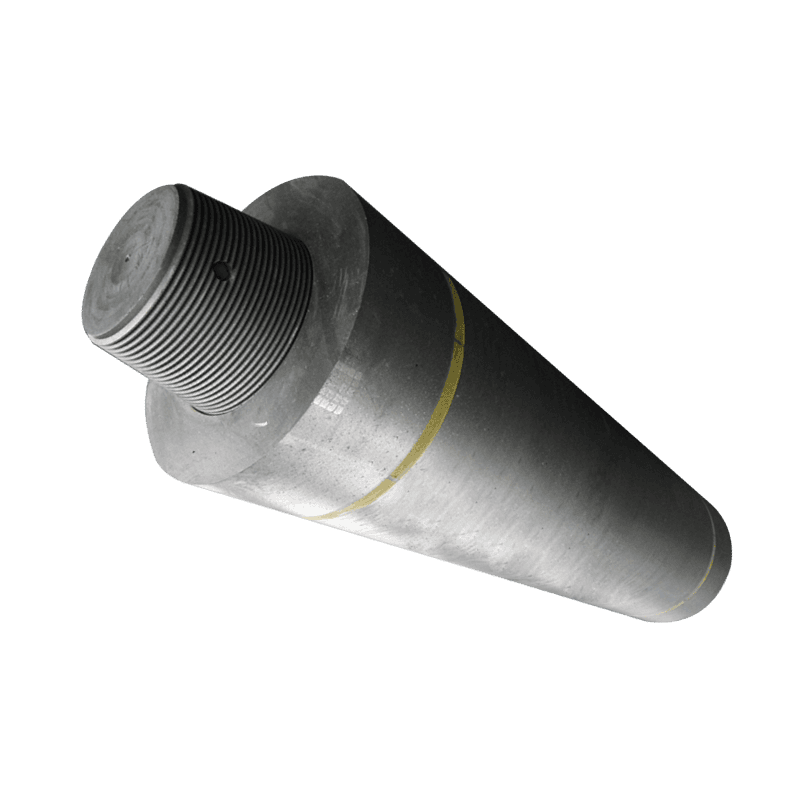The Art of Conductivity: Exploring EAF Graphite Electrodes in Depth
Release Time:
Jun 18,2025
The Art of Conductivity: Exploring EAF Graphite Electrodes in Depth Table of Contents Introduction to EAF Graphite Electrodes What Are EAF Graphite Electrodes? The Significance of EAF Graphite Electrodes in Modern Metallurgy Key Properties of EAF Graphite Electrodes The Manufacturing Process of EAF Graphite Electrodes Applications of EAF Graphite Electrodes in Industry

The Art of Conductivity: Exploring EAF Graphite Electrodes in Depth
Table of Contents
- Introduction to EAF Graphite Electrodes
- What Are EAF Graphite Electrodes?
- The Significance of EAF Graphite Electrodes in Modern Metallurgy
- Key Properties of EAF Graphite Electrodes
- The Manufacturing Process of EAF Graphite Electrodes
- Applications of EAF Graphite Electrodes in Industry
- Advantages of Using EAF Graphite Electrodes
- Challenges in Using EAF Graphite Electrodes and Their Solutions
- Future Trends in EAF Graphite Electrodes
- Conclusion
- FAQs
Introduction to EAF Graphite Electrodes
The **Electric Arc Furnace (EAF)** has revolutionized the metal production industry, enabling efficient melting and refinement of various metals. Central to the operation of EAFs are **graphite electrodes**, which facilitate the transmission of electrical energy directly into the furnace. These electrodes are not just crucial components; they embody the intersection of technology and material science, making them indispensable in modern metallurgy.
What Are EAF Graphite Electrodes?
**EAF graphite electrodes** are cylindrical rods made primarily from graphite, used in electric arc furnaces to conduct electricity and generate heat necessary for melting scrap metal and other raw materials. The electrodes are designed to withstand extreme temperatures and provide excellent conductivity. They come in various sizes and grades, tailored for specific applications within the EAF environment.
The Role of Graphite in Conductivity
Graphite is a unique material known for its remarkable conductivity due to the arrangement of its carbon atoms. This structure allows for the easy flow of electrons, making graphite electrodes highly efficient in transferring electrical energy, thus contributing significantly to the melting process within EAFs.
The Significance of EAF Graphite Electrodes in Modern Metallurgy
EAF graphite electrodes play a pivotal role in the **metallurgical industry** due to the following reasons:
1. **Energy Efficiency**: EAFs powered by graphite electrodes consume less energy compared to traditional furnaces, significantly reducing operational costs.
2. **Environmental Impact**: By utilizing scrap metal, EAFs help lower the carbon footprint associated with metal production, making the process more sustainable.
3. **Versatility**: Graphite electrodes can handle a wide range of metal types, from steel to non-ferrous metals, enhancing their utility across various sectors.
Key Properties of EAF Graphite Electrodes
Understanding the **key properties** of EAF graphite electrodes is essential for optimizing their performance. Here are some critical characteristics:
1. High Electrical Conductivity
Graphite electrodes exhibit superior electrical conductivity, allowing for efficient heat generation during the melting process.
2. Thermal Resistance
These electrodes can withstand extreme temperatures exceeding 3,000 degrees Celsius, making them highly durable in EAF operations.
3. Flexibility and Strength
EAF graphite electrodes are designed to withstand mechanical stress, ensuring reliability during intense operational conditions.
4. Low Thermal Expansion
The low thermal expansion rate of graphite minimizes the risk of cracking or breaking due to temperature changes.
The Manufacturing Process of EAF Graphite Electrodes
The production of EAF graphite electrodes involves several steps:
1. Raw Material Selection
The primary raw materials for graphite electrode production are petroleum coke and pitch, which undergo stringent quality checks.
2. Mixing and Molding
The selected materials are mixed and molded into the desired shape, typically cylindrical rods.
3. Baking
The molded electrodes are subjected to high-temperature baking, which helps in carbonization, transforming the material into graphite.
4. Graphitization
Further heating at even higher temperatures facilitates the alignment of carbon atoms, enhancing conductivity.
5. Machining and Quality Control
Finally, the electrodes are machined to precise specifications and subjected to rigorous quality control processes to ensure performance standards.
Applications of EAF Graphite Electrodes in Industry
The applications of EAF graphite electrodes extend beyond metal production. Here are some key areas where they are utilized:
1. Steel Production
Graphite electrodes are widely used for melting scrap steel, producing high-quality steel products efficiently.
2. Non-Ferrous Metal Production
EAFs equipped with graphite electrodes are also employed in the production of non-ferrous metals such as copper and aluminum.
3. Specialty Alloys
The versatility of EAF graphite electrodes extends to the creation of specialty alloys, which require precise melting and refining processes.
Advantages of Using EAF Graphite Electrodes
The benefits of utilizing EAF graphite electrodes are substantial:
1. Cost-Effectiveness
Their longevity and efficiency lead to reduced operating costs for metallurgical plants.
2. Enhanced Melting Rates
The superior conductivity of graphite electrodes ensures quick and effective melting of materials, improving overall productivity.
3. Improved Quality of Final Products
The controlled melting process facilitated by EAF graphite electrodes results in high-quality outputs with fewer impurities.
Challenges in Using EAF Graphite Electrodes and Their Solutions
Despite their advantages, EAF graphite electrodes face several challenges:
1. Wear and Tear
As electrodes undergo intense thermal and mechanical stress, wear and tear can be a significant issue. Regular monitoring and timely replacements are essential to mitigate this problem.
2. Environmental Concerns
The production and disposal of graphite electrodes can have environmental implications. Adopting sustainable practices in manufacturing and recycling can help address these concerns.
3. Supply Chain Issues
The availability of quality raw materials can be inconsistent, impacting production. Establishing reliable supplier relationships can help ensure a steady supply.
Future Trends in EAF Graphite Electrodes
The future of EAF graphite electrodes is poised for innovation:
1. Advanced Materials
Research into composite materials may result in electrodes with improved performance and reduced environmental impact.
2. Automation and AI
The integration of AI and automation in the manufacturing process can enhance efficiency, reduce costs, and improve quality control.
3. Recycling Initiatives
As sustainability becomes increasingly important, recycling initiatives for graphite electrodes will likely gain traction, promoting a circular economy.
Conclusion
EAF graphite electrodes are more than just components in electric arc furnaces; they represent a crucial element in modern metallurgy, driving efficiency and sustainability. Their unique properties and versatile applications underline their importance in the production of high-quality metals. As the industry evolves, embracing new materials and technologies will be essential to further enhance the performance and sustainability of EAF graphite electrodes.
FAQs
1. What is the primary material used in EAF graphite electrodes?
The primary materials used in EAF graphite electrodes are petroleum coke and pitch.
2. How do EAF graphite electrodes contribute to energy efficiency?
EAF graphite electrodes allow for efficient electrical conductivity, resulting in lower energy consumption during metal melting processes.
3. What temperatures can EAF graphite electrodes withstand?
EAF graphite electrodes can withstand temperatures exceeding 3,000 degrees Celsius.
4. What industries utilize EAF graphite electrodes?
EAF graphite electrodes are primarily used in steel production, non-ferrous metal production, and specialty alloy manufacturing.
5. How can the challenges of EAF graphite electrodes be addressed?
Challenges can be addressed through regular monitoring, sustainable manufacturing practices, and establishing reliable supply chains.
Keywords:
More information









